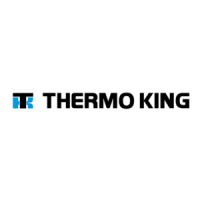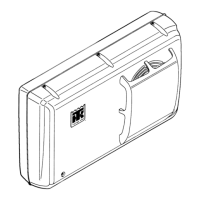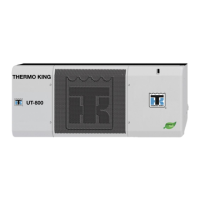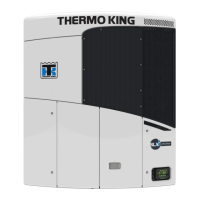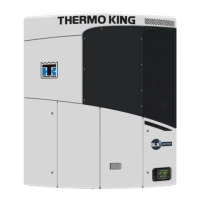Refrigeration Maintenance and Service Operations
137
3. Attach refrigerant bottle charging hose to
center of gauge manifold and purge charging
hose of air.
4. Pressurize the system with refrigerant (gas
only) until 345 kPa, 3.45 bar, 50 psig vapor
pressure is achieved.
5. Leak check the system with an electronic leak
detector to inspect all joints and connections.
(Use soap solution as an alternative test
component.) If no leaks are found but the
system has lost its refrigerant charge, proceed
to the next step.
6. Close both hand valves on gauge manifold
(front seated).
7. Disconnect the refrigerant charging hose.
8. Connect the charging hose to a source of
nitrogen. Adjust the pressure regulator to
1380 kPa, 13.80 bar, 200 psig. See “Using
Pressurized Nitrogen” in this chapter.
9. Pressurize the system with nitrogen to
1380 kPa, 13.80 bar, 200 psig.
10. Close the supply valve on the nitrogen bottle.
11. Use an electronic leak tester to inspect all
joints and connections. (Use a soap solution as
an alternative test component.)
NOTE: If system leakage is indicated, loosen
supply line hose fittings to release pressure.
Repair leakage condition.
12. If system repair is necessary, recheck system
after repairs are completed.
Figure 48: Test for Refrigerant Leaks
Using Pressurized Nitrogen
The improper use of high pressure cylinders can
cause physical damage to components, or
personal injury, or cause stress that would lead to
failure of components.
Safety Precautions
Observe the proper handling of cylinders:
1. Always keep protective cap on cylinder when
not in use.
2. Secure cylinder in proper storage area or
fastened to cart.
3. Do not expose to excessive heat or direct sun
light.
4. Do not drop, dent, or damage cylinder.
5. Use a pressure regulator and a safety pressure
relief valve as part of the pressure testing
equipment. The safety pressure relief valve
should be of the non-adjustable,
non-tempering type. The valve should bypass
any time the pressure exceeds its setting.
6. Open valve slowly; use regulators and safety
valves that are in good working order.
7. The regulator should have two gauges; one to
read tank pressure, the other to read line
pressure. Properly maintained equipment will
allow leak testing, purging, or dehydration to
be done safely.
Dehydration, pressure testing, purging and
soldering can be accomplished with the use of dry
nitrogen (N
2
). The proper equipment and
application of equipment is of greatest
importance.
AXA0186
CAUTION: Nitrogen (N
2
) is under
15,170 kPa, 151.70 bar, 2200 psig, or
greater. Pressure is for full cylinder at
21 C (70 F). DO NOT use Oxygen (O
2
),
acetylene or any other types of pressurized
gas on refrigeration systems or any
component of a system.
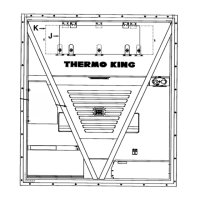
